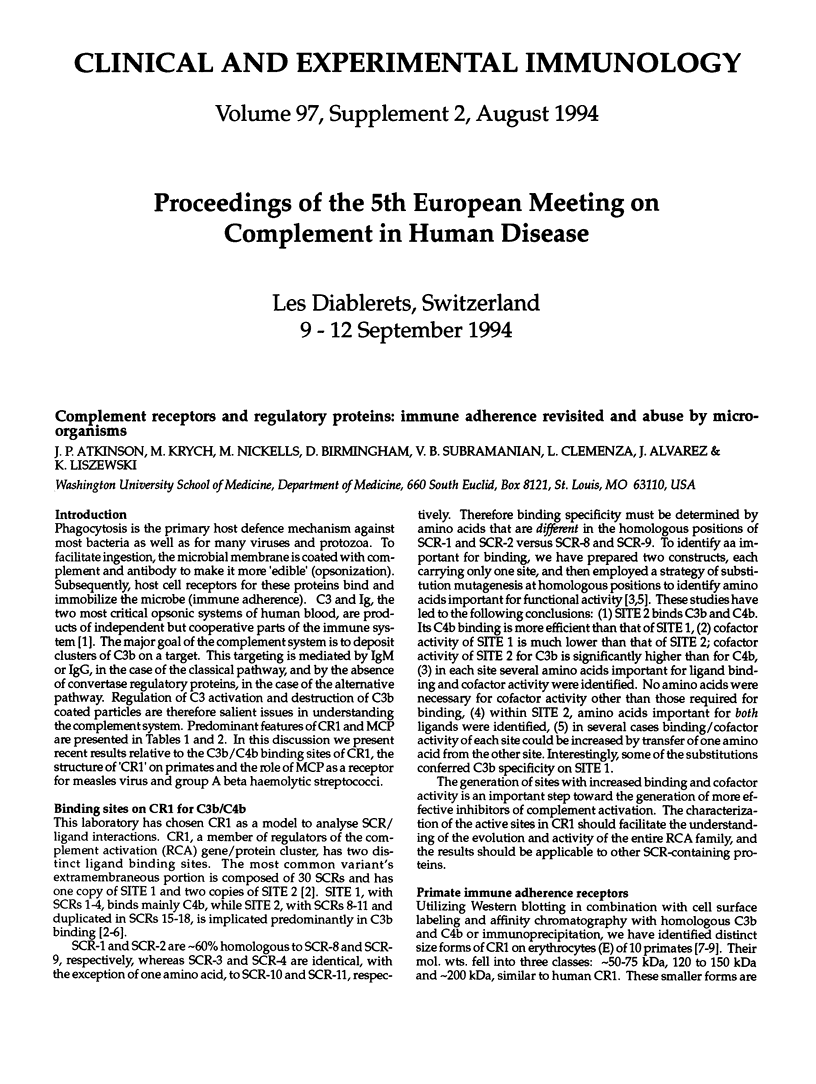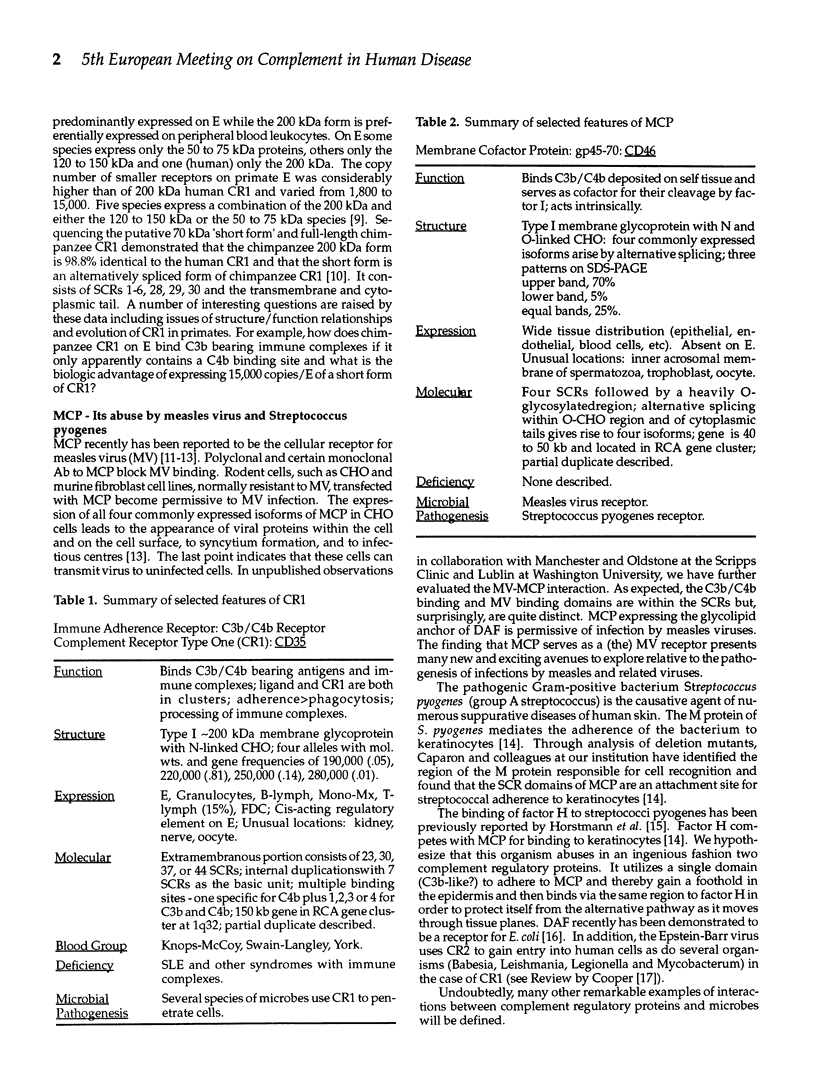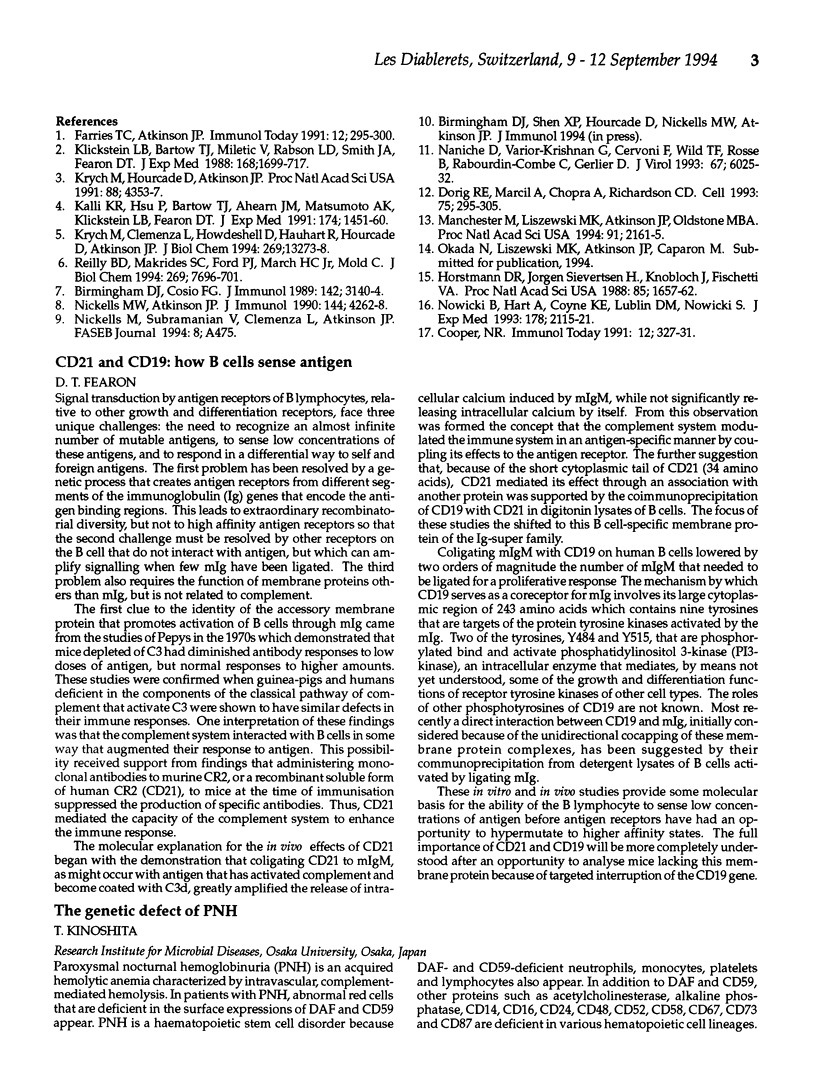Full text
PDF


Selected References
These references are in PubMed. This may not be the complete list of references from this article.
- Armstrong C., Schubert J., Ueda E., Knez J. J., Gelperin D., Hirose S., Silber R., Hollan S., Schmidt R. E., Medof M. E. Affected paroxysmal nocturnal hemoglobinuria T lymphocytes harbor a common defect in assembly of N-acetyl-D-glucosamine inositol phospholipid corresponding to that in class A Thy-1- murine lymphoma mutants. J Biol Chem. 1992 Dec 15;267(35):25347–25351. [PubMed] [Google Scholar]
- Bessler M., Mason P. J., Hillmen P., Miyata T., Yamada N., Takeda J., Luzzatto L., Kinoshita T. Paroxysmal nocturnal haemoglobinuria (PNH) is caused by somatic mutations in the PIG-A gene. EMBO J. 1994 Jan 1;13(1):110–117. doi: 10.1002/j.1460-2075.1994.tb06240.x. [DOI] [PMC free article] [PubMed] [Google Scholar]
- Bessler M., Mason P., Hillmen P., Luzzatto L. Somatic mutations and cellular selection in paroxysmal nocturnal haemoglobinuria. Lancet. 1994 Apr 16;343(8903):951–953. doi: 10.1016/s0140-6736(94)90068-x. [DOI] [PubMed] [Google Scholar]
- Birmingham D. J., Cosio F. G. Characterization of the baboon erythrocyte C3b-binding protein. J Immunol. 1989 May 1;142(9):3140–3144. [PubMed] [Google Scholar]
- Cooper N. R. Complement evasion strategies of microorganisms. Immunol Today. 1991 Sep;12(9):327–331. doi: 10.1016/0167-5699(91)90010-Q. [DOI] [PubMed] [Google Scholar]
- Dörig R. E., Marcil A., Chopra A., Richardson C. D. The human CD46 molecule is a receptor for measles virus (Edmonston strain). Cell. 1993 Oct 22;75(2):295–305. doi: 10.1016/0092-8674(93)80071-l. [DOI] [PubMed] [Google Scholar]
- Farries T. C., Atkinson J. P. Evolution of the complement system. Immunol Today. 1991 Sep;12(9):295–300. doi: 10.1016/0167-5699(91)90002-B. [DOI] [PubMed] [Google Scholar]
- Hidaka M., Nagakura S., Horikawa K., Kawaguchi T., Iwamoto N., Kagimoto T., Takatsuki K., Nakakuma H. Impaired glycosylation of glycosylphosphatidylinositol-anchor synthesis in paroxysmal nocturnal hemoglobinuria leucocytes. Biochem Biophys Res Commun. 1993 Mar 15;191(2):571–579. doi: 10.1006/bbrc.1993.1256. [DOI] [PubMed] [Google Scholar]
- Hillmen P., Bessler M., Mason P. J., Watkins W. M., Luzzatto L. Specific defect in N-acetylglucosamine incorporation in the biosynthesis of the glycosylphosphatidylinositol anchor in cloned cell lines from patients with paroxysmal nocturnal hemoglobinuria. Proc Natl Acad Sci U S A. 1993 Jun 1;90(11):5272–5276. doi: 10.1073/pnas.90.11.5272. [DOI] [PMC free article] [PubMed] [Google Scholar]
- Iida Y., Takeda J., Miyata T., Inoue N., Nishimura J., Kitani T., Maeda K., Kinoshita T. Characterization of genomic PIG-A gene: a gene for glycosylphosphatidylinositol-anchor biosynthesis and paroxysmal nocturnal hemoglobinuria. Blood. 1994 Jun 1;83(11):3126–3131. [PubMed] [Google Scholar]
- Kalli K. R., Hsu P. H., Bartow T. J., Ahearn J. M., Matsumoto A. K., Klickstein L. B., Fearon D. T. Mapping of the C3b-binding site of CR1 and construction of a (CR1)2-F(ab')2 chimeric complement inhibitor. J Exp Med. 1991 Dec 1;174(6):1451–1460. doi: 10.1084/jem.174.6.1451. [DOI] [PMC free article] [PubMed] [Google Scholar]
- Klickstein L. B., Bartow T. J., Miletic V., Rabson L. D., Smith J. A., Fearon D. T. Identification of distinct C3b and C4b recognition sites in the human C3b/C4b receptor (CR1, CD35) by deletion mutagenesis. J Exp Med. 1988 Nov 1;168(5):1699–1717. doi: 10.1084/jem.168.5.1699. [DOI] [PMC free article] [PubMed] [Google Scholar]
- Krych M., Clemenza L., Howdeshell D., Hauhart R., Hourcade D., Atkinson J. P. Analysis of the functional domains of complement receptor type 1 (C3b/C4b receptor; CD35) by substitution mutagenesis. J Biol Chem. 1994 May 6;269(18):13273–13278. [PubMed] [Google Scholar]
- Krych M., Hourcade D., Atkinson J. P. Sites within the complement C3b/C4b receptor important for the specificity of ligand binding. Proc Natl Acad Sci U S A. 1991 May 15;88(10):4353–4357. doi: 10.1073/pnas.88.10.4353. [DOI] [PMC free article] [PubMed] [Google Scholar]
- Manchester M., Liszewski M. K., Atkinson J. P., Oldstone M. B. Multiple isoforms of CD46 (membrane cofactor protein) serve as receptors for measles virus. Proc Natl Acad Sci U S A. 1994 Mar 15;91(6):2161–2165. doi: 10.1073/pnas.91.6.2161. [DOI] [PMC free article] [PubMed] [Google Scholar]
- Miyata T., Takeda J., Iida Y., Yamada N., Inoue N., Takahashi M., Maeda K., Kitani T., Kinoshita T. The cloning of PIG-A, a component in the early step of GPI-anchor biosynthesis. Science. 1993 Feb 26;259(5099):1318–1320. doi: 10.1126/science.7680492. [DOI] [PubMed] [Google Scholar]
- Miyata T., Yamada N., Iida Y., Nishimura J., Takeda J., Kitani T., Kinoshita T. Abnormalities of PIG-A transcripts in granulocytes from patients with paroxysmal nocturnal hemoglobinuria. N Engl J Med. 1994 Jan 27;330(4):249–255. doi: 10.1056/NEJM199401273300404. [DOI] [PubMed] [Google Scholar]
- Naniche D., Varior-Krishnan G., Cervoni F., Wild T. F., Rossi B., Rabourdin-Combe C., Gerlier D. Human membrane cofactor protein (CD46) acts as a cellular receptor for measles virus. J Virol. 1993 Oct;67(10):6025–6032. doi: 10.1128/jvi.67.10.6025-6032.1993. [DOI] [PMC free article] [PubMed] [Google Scholar]
- Nickells M. W., Atkinson J. P. Characterization of CR1- and membrane cofactor protein-like proteins of two primates. J Immunol. 1990 Jun 1;144(11):4262–4268. [PubMed] [Google Scholar]
- Norris J., Hall S., Ware R. E., Kamitani T., Chang H. M., Yeh E., Rosse W. F. Glycosyl-phosphatidylinositol anchor synthesis in paroxysmal nocturnal hemoglobinuria: partial or complete defect in an early step. Blood. 1994 Feb 1;83(3):816–821. [PubMed] [Google Scholar]
- Nowicki B., Hart A., Coyne K. E., Lublin D. M., Nowicki S. Short consensus repeat-3 domain of recombinant decay-accelerating factor is recognized by Escherichia coli recombinant Dr adhesin in a model of a cell-cell interaction. J Exp Med. 1993 Dec 1;178(6):2115–2121. doi: 10.1084/jem.178.6.2115. [DOI] [PMC free article] [PubMed] [Google Scholar]
- Reilly B. D., Makrides S. C., Ford P. J., Marsh H. C., Jr, Mold C. Quantitative analysis of C4b dimer binding to distinct sites on the C3b/C4b receptor (CR1). J Biol Chem. 1994 Mar 11;269(10):7696–7701. [PubMed] [Google Scholar]
- Takahashi M., Takeda J., Hirose S., Hyman R., Inoue N., Miyata T., Ueda E., Kitani T., Medof M. E., Kinoshita T. Deficient biosynthesis of N-acetylglucosaminyl-phosphatidylinositol, the first intermediate of glycosyl phosphatidylinositol anchor biosynthesis, in cell lines established from patients with paroxysmal nocturnal hemoglobinuria. J Exp Med. 1993 Feb 1;177(2):517–521. doi: 10.1084/jem.177.2.517. [DOI] [PMC free article] [PubMed] [Google Scholar]
- Takeda J., Miyata T., Kawagoe K., Iida Y., Endo Y., Fujita T., Takahashi M., Kitani T., Kinoshita T. Deficiency of the GPI anchor caused by a somatic mutation of the PIG-A gene in paroxysmal nocturnal hemoglobinuria. Cell. 1993 May 21;73(4):703–711. doi: 10.1016/0092-8674(93)90250-t. [DOI] [PubMed] [Google Scholar]
- Tartakoff A. M., Singh N. How to make a glycoinositol phospholipid anchor. Trends Biochem Sci. 1992 Nov;17(11):470–473. doi: 10.1016/0968-0004(92)90491-q. [DOI] [PubMed] [Google Scholar]


